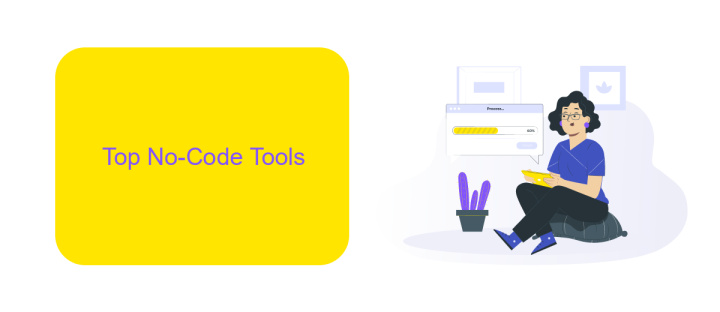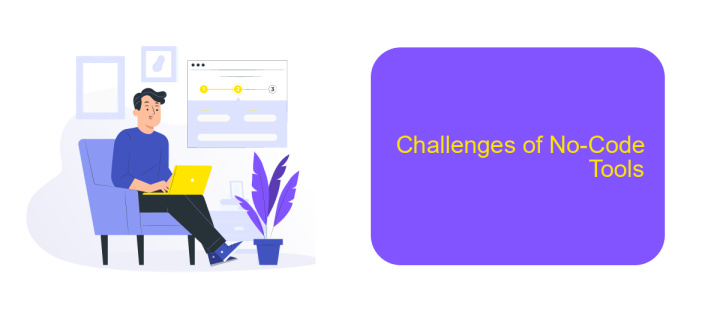No-Code Tools List
In today's fast-paced digital world, no-code tools have revolutionized the way we create and innovate. These platforms empower individuals and businesses to build websites, apps, and automation without any programming knowledge. This article provides a comprehensive list of the best no-code tools available, helping you to streamline processes, enhance productivity, and bring your creative ideas to life effortlessly.
No-Code Tool Categories
No-code tools are revolutionizing the way we build and manage digital solutions without requiring extensive programming knowledge. These tools can be categorized into several key areas:
- Website Builders
- App Development Platforms
- Automation Tools
- Data Management Systems
- Integration Services
Each category serves a unique purpose, from creating stunning websites to automating complex workflows. Integration services like ApiX-Drive play a crucial role in connecting various applications and automating data transfer between them, making it easier to streamline operations and enhance productivity. By leveraging these no-code tools, businesses can innovate faster and more efficiently.
Top No-Code Tools

No-code tools have revolutionized the way individuals and businesses approach software development, enabling users to create applications without any coding knowledge. Among the top no-code tools, Bubble stands out for its comprehensive platform that allows users to design, develop, and host web applications. Another notable tool is Webflow, which combines web design and development in a visual canvas, making it easier for designers to build responsive websites.
For those looking to automate workflows and integrate various applications, Zapier and ApiX-Drive are invaluable. Zapier connects over 2,000 apps, enabling users to automate repetitive tasks. ApiX-Drive, on the other hand, specializes in setting up integrations with a focus on ease of use and reliability, making it an excellent choice for businesses looking to streamline their operations. Additionally, Airtable offers a unique blend of spreadsheet functionality and database capabilities, ideal for managing projects and data collaboratively.
Benefits of No-Code Tools

No-code tools have revolutionized the way businesses approach software development, providing a plethora of benefits that cater to both technical and non-technical users. These tools enable rapid prototyping, reduce costs, and democratize the development process.
- Ease of Use: No-code platforms are designed with user-friendly interfaces, allowing anyone to create applications without prior coding knowledge.
- Cost-Effective: By eliminating the need for specialized developers, no-code tools significantly reduce the cost of application development.
- Faster Development: With drag-and-drop features and pre-built templates, projects can be completed in a fraction of the time it would take with traditional coding.
- Flexibility: These tools offer a wide range of customization options, enabling users to tailor applications to their specific needs.
- Integration Capabilities: Services like ApiX-Drive facilitate seamless integration with various applications, enhancing the functionality of no-code tools.
In summary, no-code tools empower organizations to innovate quickly and efficiently. By lowering the barriers to application development, these platforms enable anyone to turn their ideas into reality, fostering a culture of creativity and agility in the business environment.
Challenges of No-Code Tools

No-code tools have revolutionized the way individuals and businesses approach software development. However, they come with their own set of challenges. One major issue is the limited customization options. While these tools offer a wide range of functionalities, they often lack the flexibility that traditional coding provides.
Another challenge is scalability. No-code platforms can struggle to handle complex, large-scale projects. As your business grows, you may find that the limitations of no-code tools become more apparent, requiring a transition to more robust solutions.
- Limited customization options
- Scalability issues
- Integration difficulties
- Dependency on platform stability
Integration with other systems can also be a hurdle. While services like ApiX-Drive can help streamline the integration process, not all no-code tools support seamless connections with external applications. Lastly, relying on a no-code platform means you are dependent on its stability and updates, which can affect your project's performance and reliability.


Future of No-Code Tools
The future of no-code tools is incredibly promising, as these platforms continue to evolve and become more sophisticated. With advancements in artificial intelligence and machine learning, no-code tools are expected to offer even more powerful capabilities, enabling users to build complex applications with minimal effort. This democratization of technology empowers individuals and businesses to innovate rapidly without the need for extensive technical knowledge. As a result, we can anticipate a surge in creative solutions and a significant reduction in development time and costs.
Integration capabilities will also play a crucial role in the future of no-code tools. Services like ApiX-Drive are leading the way by providing seamless integration options that connect various applications and automate workflows. By simplifying the process of linking different software systems, no-code platforms will further enhance productivity and efficiency. As these tools become more versatile and user-friendly, we can expect them to be adopted across a wider range of industries, driving digital transformation and fostering a more inclusive technological landscape.
FAQ
What are No-Code tools?
Who can benefit from using No-Code tools?
Can No-Code tools be used for complex projects?
How can I automate workflows using No-Code tools?
Is it possible to integrate different apps using No-Code tools?
Do you want to achieve your goals in business, career and life faster and better? Do it with ApiX-Drive – a tool that will remove a significant part of the routine from workflows and free up additional time to achieve your goals. Test the capabilities of Apix-Drive for free – see for yourself the effectiveness of the tool.

